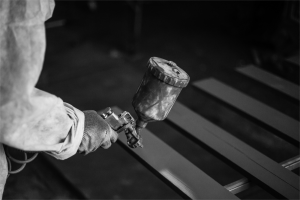
Is carbon black biodegradable? Understand its environmental impact
2023-11-16
When it comes to the biodegradability and environmental impact of carbon black, there is often some confusion. Carbon black is a common industrial product that is widely used in many fields, including rubber products, inks, and plastic products. Therefore, it is crucial to understand its impact on the environment. In this article, we’ll explore the biodegradability of carbon black, as well as information on some eco-friendly alternatives.
After reading this, if you still have questions about carbon black, or want to find a manufacturer that specializes in the production of carbon black, please contact the editor to provide you with high-quality products and complete ordering information, get it now!
First, let’s take a look at the biodegradability of carbon black. Simply put, carbon black is not biodegradable. Due to its highly graphitized properties, carbon black is highly durable in the natural environment and cannot be degraded by microorganisms. This means that once black carbon enters soil or water, it can remain there for a long time and have potentially negative impacts on ecosystems.
Second, let’s take a closer look at the impact of carbon black on the environment. Because carbon black is often used as a filler and color enhancer, it may release harmful substances during production and use. For example, carbon black particles may become suspended in the air and impact air quality. In addition, the disposal of carbon black waste may also lead to contamination of soil and water bodies, thereby endangering the health of ecosystems.
However, despite these environmental concerns with carbon black, we can also look for greener alternatives. For example, biocarbon black made from renewable resources is a potential alternative. Compared with traditional carbon black, biocarbon black is derived from renewable resources, has better biodegradability and reduces adverse effects on the environment. In addition, some manufacturers are also actively developing new technologies to produce carbon black using renewable energy to reduce dependence on fossil resources and reduce carbon emissions.
In addition to biocarbon black, there are several other environmentally friendly alternatives available. For example, some companies are researching and developing green fillers produced from renewable raw materials to replace traditional carbon black fillers. These green fillers not only have better biodegradability, but also have less environmental impact during the production process.
In summary, although traditional carbon black has some issues with biodegradability and environmental impact, there are reasons to be optimistic about future alternatives. The development of biocarbon black and other environmentally friendly alternatives provides us with more choices and is expected to create a cleaner and more sustainable production and consumption environment for us. By promoting technological innovation and sustainable development, we can gradually reduce the negative impact of carbon black on the environment, achieve effective utilization and recycling of resources, and thereby contribute to the sustainable development of the earth.

